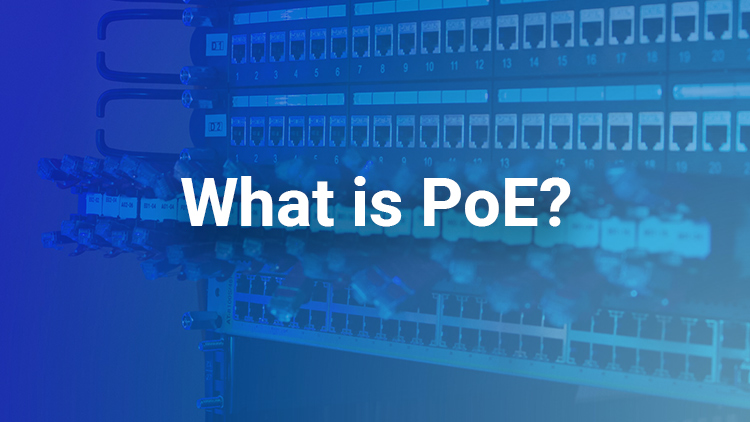Everything You Need To Know About The 24 Port PoE Switch – A Comprehensive Guide

If you’re looking for a reliable and powerful networking solution, the 24 port PoE switch is an ideal choice. With many businesses now opting for a fully digital infrastructure, it’s no surprise that this switch has become increasingly popular over the last few years. But what exactly is it? What features does it offer? And why is it so useful? In this blog post, we’ll answer all these questions and more. We’ll look at the basics of what a 24 port PoE switch is, its advantages and disadvantages, and how to choose one. Whether you’re in need of a high-power network device or simply want to upgrade your existing setup, read on to find out everything you need to know about the 24 port PoE switch!
What is a PoE Switch?
A Power over Ethernet (PoE) Switch is a device that can deliver data and power over a single Ethernet cable to devices such as IP cameras, VoIP phones, and Wireless Access Points (WAPs). A PoE Switch can be used to connect these devices to a network without the need for an external power source.
A PoE Switch typically has two types of ports: Data Ports and Power Ports. Data Ports are used to connect devices that need to receive data, such as computers and laptops. Power Ports are used to connect devices that need to receive power, such as IP Cameras and VoIP phones.
When deciding which type of PoE Switch is right for your needs, it is important to consider the amount of power that each device will require. For example, an IP camera may require more power than a VoIP phone. If you are unsure about the power requirements of your devices, it is best to consult with a professional before making a purchase.
The Different Types of PoE Switches
When it comes to Power over Ethernet (PoE) switches, there are three main types: desktop, wall-mount, and rack-mount.
Desktop PoE switches are typically small and compact, making them ideal for use in a home or small office. Wall-mount PoE switches are designed to be mounted on a wall, while rack-mount PoE switches can be mounted in a server rack.
PoE switches come in different sizes, with the number of ports ranging from two to 48. The most common type of PoE switch is the 8-port switch, although 16-port and 24-port switches are also available.
When choosing a PoE switch, it’s important to consider the number of devices that will be connected to it. For example, if you’re only going to be connecting eight devices, then a 2-port switch would suffice. However, if you plan on connecting more than eight devices, then you’ll need a larger switch.
Another thing to keep in mind when choosing a PoE switch is the power budget. This is the maximum amount of power that the switch can provide to all of the connected devices. Most PoE switches have a power budget of 30 watts, although some higher-end models can provide up to 60 watts of power.
Pros and Cons of a PoE Switch
A PoE switch can be a great investment for your network, but there are some pros and cons to consider before making your purchase.
PROS:
-A PoE switch can provide power to devices over the Ethernet cable, eliminating the need for extra power cables or outlets. This can be helpful in reducing clutter and saving space.
-A PoE switch can be more energy efficient than other types of switches, since it only uses power when there is data being transmitted.
-A PoE switch can be less expensive than other types of switches, since you don’t need to purchase additional power supplies or cabling.
CONS:
-A PoE switch may not be compatible with all types of devices. Make sure to check compatibility before making your purchase.
-A PoE switch may not support as much data throughput as other types of switches. If you have high bandwidth needs, make sure to choose a switch that can handle your traffic.
What are the Benefits of a PoE Switch?
A PoE switch can offer a number of benefits for your network. Here are some of the key advantages:
1. Increased flexibility – With a PoE switch, you can power devices that are located in difficult or hard-to-reach places. This can be useful if you need to deploy devices in hard-to-reach areas, or if you want to avoid running power cables to these locations.
2. Cost savings – PoE switches can help you to save money on installation and infrastructure costs. By avoiding the need to run power cables to each device, you can reduce the overall cost of your network deployment.
3. Enhanced security – PoE switches can offer enhanced security features, such as 802.1X authentication and port security. This can help to protect your network from unauthorized access and malicious attacks.
4. improved performance – PoE switches can offer improved performance compared to traditional Ethernet switches. By providing power to devices over the Ethernet cable,PoE switches can eliminate the need for wasteful AC adapters and improve data transfer speeds.
Conclusion
We hope this comprehensive guide has provided you with the information needed to make an informed decision about purchasing a 24 port PoE switch. With its many features and benefits, it can be an invaluable tool for any business or home network. Whether you’re looking for a cost-effective way to increase your current network speed or need the convenience that comes with not needing several power adapters, a 24 port PoE switch is worth considering. Investing in this type of equipment may save you time and money in the long run, so don’t hesitate to explore all your options!